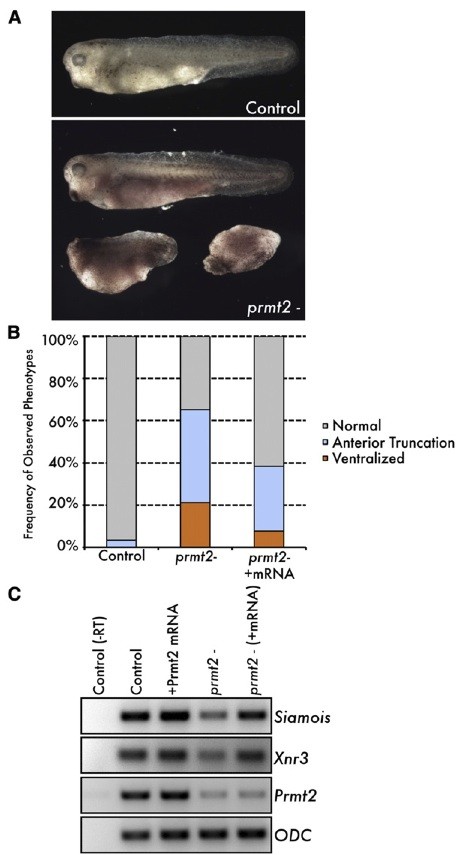XB-IMG-76380
Xenbase Image ID: 76380

|
Figure 5. Maternal Prmt2 Is Necessary for Dorsal Specification
(A and B) Transplantation and fertilization of maternal Prmt2-depleted (prmt2-) oocytes results in a range of ventralized tadpole-stage phenotypes (A, lower panel) compared with controls, which develop normally (A, top panel). The mean frequency of phenotypes arising from maternal Prmt2 depletion is plotted in B (see text for details). The frequency of ventralized embryos (both partial and complete) is reduced by co-injection of Prmt2 mRNA (prmt2-/+mRNA).
(C) Blastula stage (stage 9) siamois and xnr3 expression was measured in prmt2- and rescued (prmt2- (+mRNA)) host transfer embryos as compared with control (nondepleted) and Prmt2 mRNA injected embryos. As a control for the efficiency of knockdown, prmt2 was measured. Note that the rescuing mRNA (1 ng of mouse Prmt2, injected into oocytes) is not amplified by the Xenopus prmt2 primers used here. Expression of rescuing mRNA was confirmed by western blot (not shown). Embryos expressing Prmt2 mRNA alone developed identically to controls, with no dorsoventral defects (not shown).
See also Figure S3. Image published in: Blythe SA et al. (2010) Copyright © 2010. Image reproduced with permission of the Publisher, Elsevier B. V. Larger Image Printer Friendly View |
